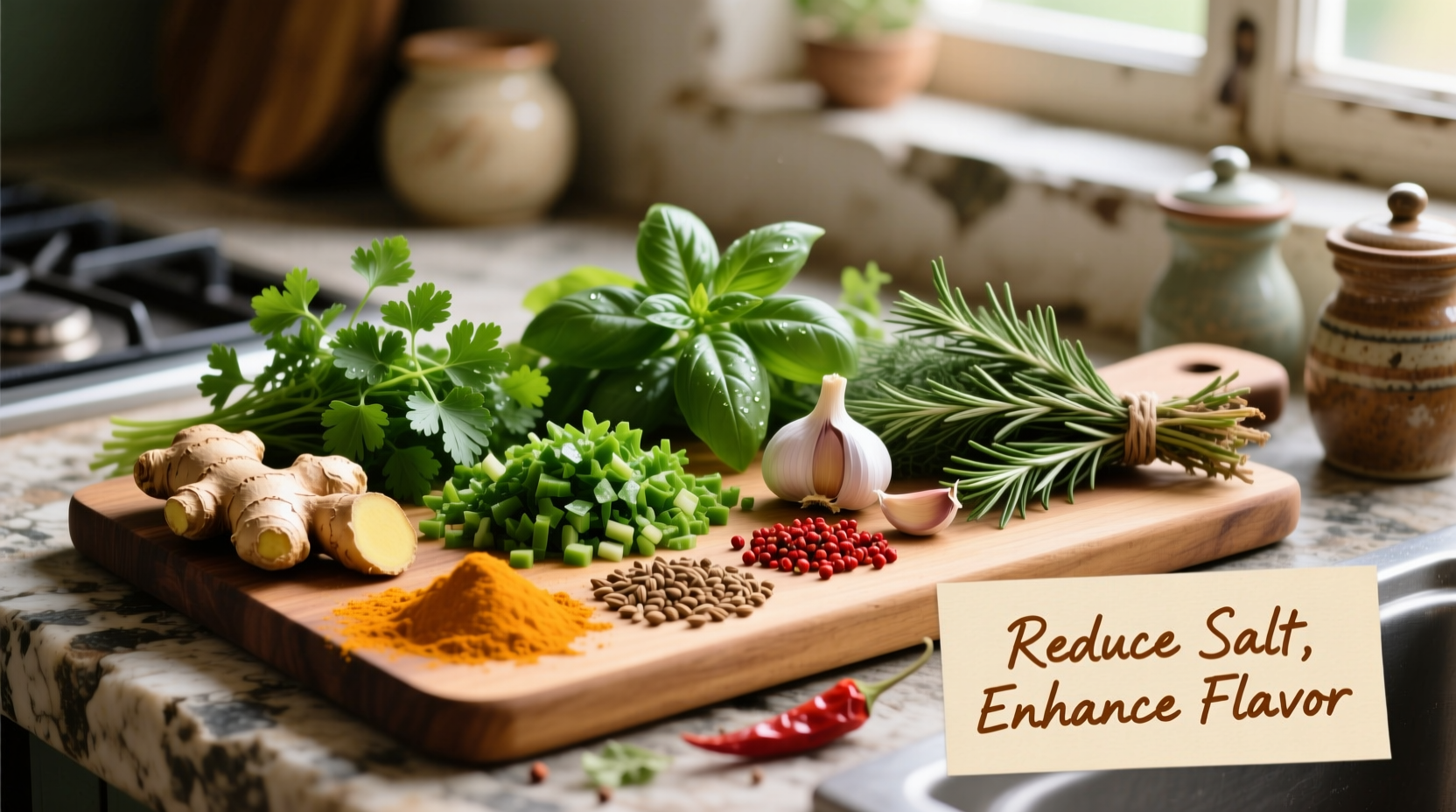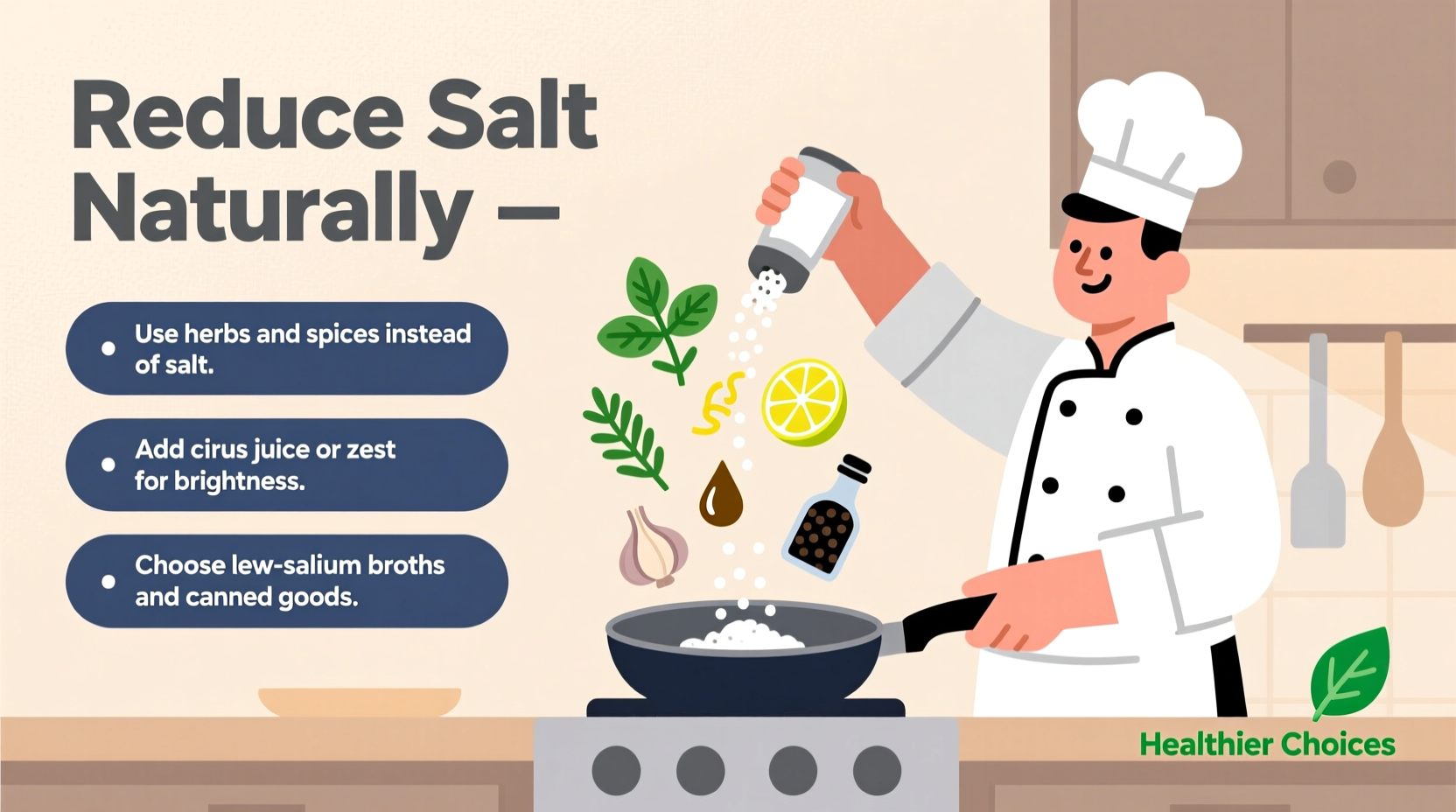Why Reducing Salt Matters More Than You Think
Excessive sodium intake affects nearly 90% of American adults, contributing to hypertension and cardiovascular issues. According to the Centers for Disease Control and Prevention, the average daily sodium consumption exceeds recommendations by nearly 50%. The good news? Small, consistent changes in your cooking approach can significantly reduce sodium without sacrificing taste satisfaction.
The Flavor Science Behind Effective Salt Reduction
Your taste buds adapt to salt levels within 8-12 weeks. Research published in the American Journal of Clinical Nutrition shows that gradually reducing sodium allows your palate to recalibrate, making previously normal salt levels taste overly salty. Understanding this adaptation process is crucial for sustainable change.
How Taste Perception Changes Over Time
| Time Period | Taste Bud Response | Recommended Action |
|---|---|---|
| Weeks 1-2 | Food may taste bland | Reduce salt by 10-15% while adding herbs |
| Weeks 3-4 | Increased sensitivity to flavors | Reduce another 10% and incorporate citrus |
| Weeks 5-8 | Previously normal salt levels taste salty | Maintain reduced levels; focus on umami sources |
| 8+ weeks | Preference shifts toward lower sodium | Enjoy enhanced natural food flavors |
10 Practical Methods to Reduce Salt Without Losing Flavor
1. The Gradual Reduction Technique
Instead of eliminating salt immediately, reduce by 10-25% each week. This method, recommended by the American Heart Association, allows your taste buds to adapt naturally. For example, if a recipe calls for 1 teaspoon of salt, start with 3/4 teaspoon, then move to 1/2 teaspoon after two weeks.
2. Maximize Herb and Spice Combinations
Fresh or dried herbs provide complex flavor profiles that compensate for reduced salt. Try these proven combinations:
- Mediterranean: Rosemary, thyme, oregano, and garlic
- Mexican: Cumin, coriander, smoked paprika, and cilantro
- Asian: Ginger, garlic, lemongrass, and five-spice powder

3. Leverage Acidic Ingredients for Brightness
Citrus juices and vinegars activate different taste receptors, creating a perception of enhanced flavor. Add lemon juice to fish dishes, apple cider vinegar to bean salads, or balsamic to roasted vegetables. The Dietary Guidelines for Americans specifically recommends using acids as flavor enhancers in sodium-reduced cooking.
4. Incorporate Umami-Rich Ingredients
Umami, the fifth taste, creates satisfying depth without salt. Effective umami sources include:
- Mushrooms (especially dried shiitake)
- Tomatoes and tomato paste
- Nutritional yeast
- Miso paste (use low-sodium versions)
5. Master Proper Seasoning Timing
Add salt substitutes at different cooking stages for layered flavor. Add dried herbs early in cooking, fresh herbs near the end, and acids just before serving. This technique, used by professional chefs, creates more complex flavor profiles that reduce the need for salt.
Real-World Application: Transforming Common High-Sodium Dishes
Reducing Salt in Soups and Stews
Instead of relying on salt for depth, build flavor with:
- Roasted vegetables for natural sweetness
- Seared mushrooms for umami
- Herb bundles (thyme, bay leaves, parsley stems)
- Final splash of vinegar or citrus
Creating Flavorful Low-Sodium Sauces
Replace salt-heavy stock with:
- Homemade vegetable broth using mushroom trimmings
- Tomato-based sauces enhanced with roasted garlic
- Cream sauces with fresh herbs and lemon zest
Overcoming Common Salt Reduction Challenges
Dealing with Family Resistance
When family members complain about "bland" food, implement these strategies:
- Involve them in the cooking process to build appreciation
- Offer small salt shakers at the table for individual adjustment
- Create "flavor stations" with different herb blends for customization
Navigating Processed Foods
When purchasing packaged foods, look for these labels:
- "No salt added" (contains no sodium)
- "Low sodium" (140mg or less per serving)
- "Reduced sodium" (at least 25% less than original)
Long-Term Success with Sustainable Salt Reduction
Successful sodium reduction isn't about deprivation—it's about flavor discovery. As your palate adapts, you'll notice enhanced appreciation for subtle food flavors and natural sweetness in ingredients. The National Heart, Lung, and Blood Institute reports that consistent low-sodium eating can reduce blood pressure within weeks, with maximum benefits appearing after 4-12 weeks.











 浙公网安备
33010002000092号
浙公网安备
33010002000092号 浙B2-20120091-4
浙B2-20120091-4